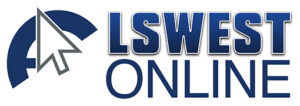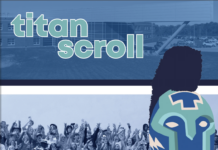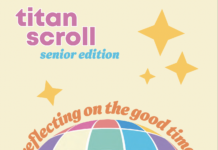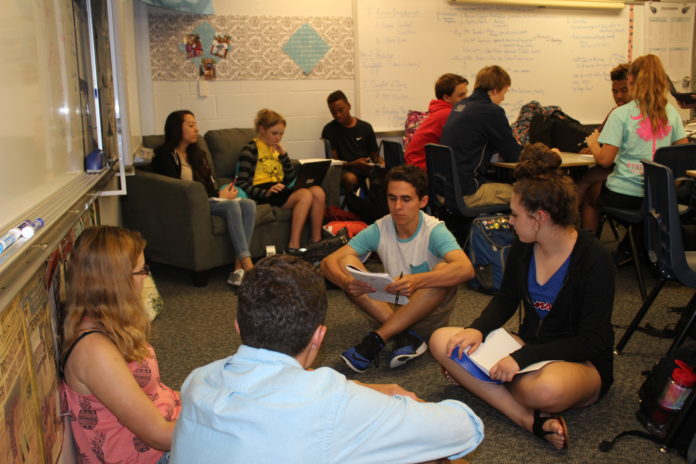
Story by Carsyn Owens
Imagine sitting in comfortable chairs during class, having regular discussion time with small groups, and really getting to know the classroom and the students in it. Imagine getting to pick any topic in history that sounds interesting, and researching it. Imagine having a teacher that only lectures for about 15 minutes each class period.
No more hand cramps from writing notes for 45 minutes straight, no more butt cramps from sitting in hard, plastic chairs and no more awkward silences and confused looks at each other when the teacher asks a question.
This sounds crazy, right? Wrong. These are the types of changes Advanced World History teacher, Rhonda Ireland is giving a whirl this year with her sophomore students.
Ireland has been using some aspects of the new teaching method — The Thinking Workshop Model — for over ten years.
“I wouldn’t necessarily say it is new… I already use a lot of the elements of the Workshop model, meaning, I give a little input, I might provide a set of text or documents,” said Ireland.
Here’s how the Workshop Model works: First, there’s a mini lesson where Ireland lectures and the students take notes. Then there’s work time where the students look at DBQs (Document-Based Questions); Ireland said she tends to walk around and make sure everyone’s doing okay while work time is going on.
After that, the students usually get into small groups and talk about their answers and relating topics. After the small groups, everyone comes back and has a discussion about what they talked about with the entire class.
Ireland then asks students to go out and find articles about the topic they’re working on, or the same idea. For example, revolutions. If they were learning the French Revolution, they are to go look for articles that somehow turned violent, like the French Revolution did with the Reign of Terror, then talk about if that violence was justified. It’s okay for them to research current things, or modern day genocide, but she said they have to relate it back to the topic they’re learning about.
The classroom is having a lot of guided discussions and some students believe it contributes to a more comfortable atmosphere.
“We do a lot of group things so, if you don’t understand something, you have people to talk to, instead of individual stuff where maybe there’s a miscommunication and you don’t know what’s going on,” said sophomore Lesley Lovelace.
Another element of the Thinking Workshop Model is independent research. Students are expected to research something of their choosing in history as homework, then are asked to compare their event to the event their talking about in class.
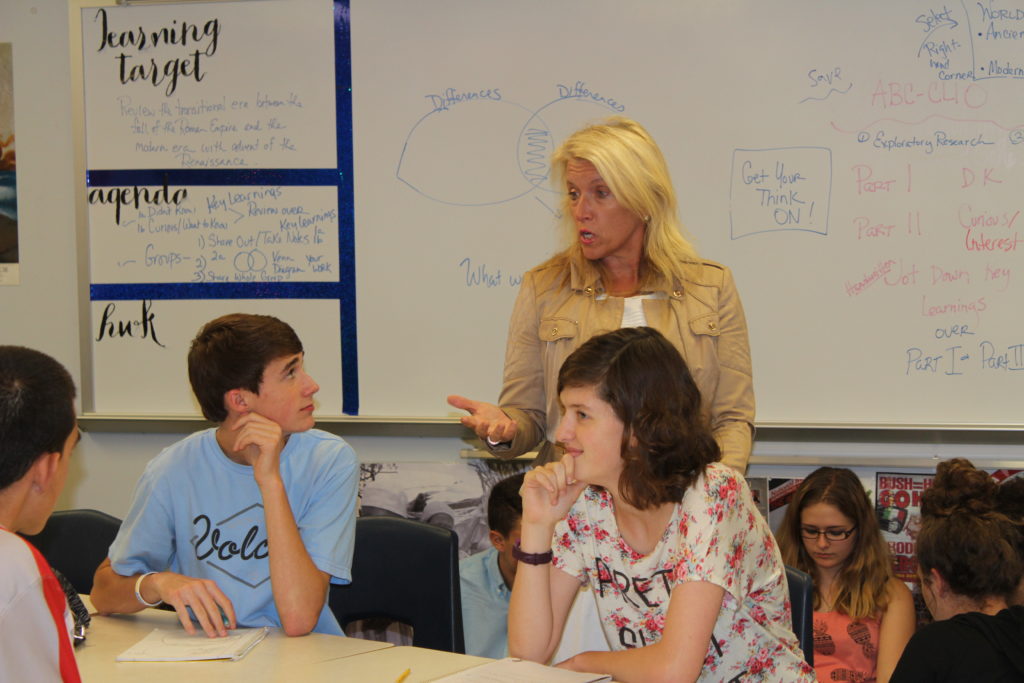
Ireland helps her students know how to research rather than just telling them what exactly to research. She also said she gives them resources and what to look for when researching, not just giving the students a specific topic to look into.
“You don’t provide it, you help them arrive at it,” said Ireland.
Since each student is allowed to research their own topic in history, Sophomore Uzoaku Okafor said it can get hectic. For example, “We got to research anything from the Medieval Times… some people did some type of empire, some people did just art, some people talked about certain groups, there was all this information… so it was really confusing to keep up,” she said.
There are positives to the independent researching though, according to Lovelace, “I like researching what we want to because it actually gives us something that we’re interested in… say you get something you’re not interested in, then you’re just kind of doing the work just to do, but if we choose it, then we can do work that we’re actually excited to learn about.”
“She makes us actually excited to learn the stuff we’re learning… because there are some eras in history that can be really boring, but she makes it fun,” said Okafor. She also said Ireland has taught her to be more of an independent student and learner.
Since there are a lot of discussions in small groups during class and everyone is researching a different thing, Ireland said that it’s okay for students to have different answers, “They don’t have to have the same answer as the person next to them to achieve mastery of the learning target. They will be better at discussion, they’ll be better at evaluating and analysis because they’re not going to be told every step of the way ‘the how’ to do it.”
Lovelace said the daily discussions have made the class more pleasant for her, “It’s just a better environment, like, you just feel more comfortable sharing stuff you learned about instead of kind of keeping it in.”
The new teaching method “gives everyone a sense in the classroom that them understanding the subject actually matters and them participating in the class actually matters,” said Okafor.
“It might not come out as everyone has envisioned, but I think we’re on a great start as a district,” said Ireland.
